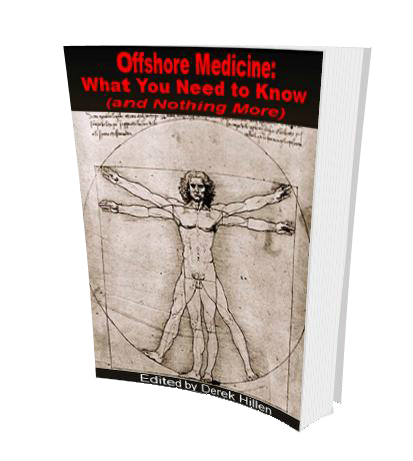- Boat
- Articles
- About
- Tehani-li Logs
- 2004
- Uligan Maldives
- Man, Oh Man, Oman
- Eritrea: The Nicest Place You’ve Never Heard Of
- Cruising Notes: Oman to Eritrea – From Pirates to Cappucinos
- Old Testament Sudan
- Egypt: Legend, Myth and Reality
- Thoughts on Cruising the Red Sea
- Greece: Civilization Again
- Montenegro
- Malta
- Sardinia, Italy
- Barcelona, Spain
- 2003
- 2002
- 2001
- 2004
- Contact
Barcelona, Spain
Long time no update! Yes, we are here in Barcelona and have been busy re-acquainting ourselves with the first world. I can say it is expensive and you get what you pay for. No more living on a beach in India for pennies a day. I think we’re quite happy spending some money to get good quality service, good quality food and good quality goods.
Spending so long in the developing world you eventually get tired of poor service, wonky food and no stuff, at least we do. We arrived in Barcelona after a straight shot from Sardinia, Italy on September 1. We finally had a reservation at Marina Port Vell, the big marina right in the old part of the city and we didn’t want to lose it. We know other boats had been on the waiting list all summer.
This marina was built for the 1992 Olympics and was part of a greater waterfront development effort by the city. Where previously it was a dangerous rundown dock area surrounded by crumbling warehouses, the city completely transformed it and everything is very nice with plenty of shops and restaurants.
There is even an Imax large screen theatre – but it only shows movies in Spanish! Got to get out the books and start studying again. Ariel is enjoying having clean restaurants and shopping available and there are miles of interesting walks through this ancient city. Another bonus – no flies on the meat in the shops.
The old town where we are boasts over 2,000 years of history and there are even remains of the old Roman walls you can walk up to and touch. The people are nice but they mostly speak Catalan as their first language. This stands to reason as we are in the middle of the province of Catalonia.
Locals are Catalan first, Spanish second. Growing up in California we had to take Spanish in high school so I had some background in the language. I have also traveled widely in Latin America and can get by. I was looking forward to learning more Spanish here but most of the menus and signs are Catalan only!
Catalan seems to be a mix between French and Spanish with some other words thrown in just to confuse outsiders. We just came across another one on a menu today, “crispy i crudites!” What the heck does that mean? “Crispy” I can figure out by myself, “i” must be like “y” in Spanish and means “and.”
Then we are left with “crudites.” Could it be “crude”? “Crispy and crude?” I don’t think that would work on a menu. Maybe it is “raw,” like “crudo” in Spanish or “cru” in French. But if it were “raw” then how could it be “crispy”?? In the end we ordered something else.
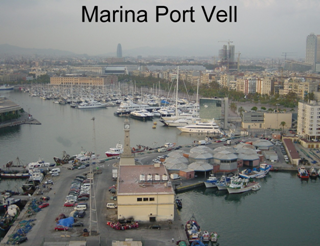
One of the things that makes Spain so interesting is its vibrant regionalism. With a long and bloody history, each province in this country has its own world view and looks upon its neighbors with maybe just a little suspicion. Madrid, the capital, is the hub of the spokes in the geographic wheel and tries very hard to hold it all together.
Galicia is another region, in the northwest, where there is a resurgent fierce pride in “gallego,” or anything Galician. I spent time up there on another trip and it is a beautiful part of the world, even if Fidel Castro’s family originally crawled forth from there.
You have probably also heard of the Basque region, right next door to us. The Basques are racially and linguistically a totally separate people to the Spanish. In fact, they are different from any other group in Europe and were here before all the rest. Anthropologists and historians don’t really know where they came from or what to make of them.
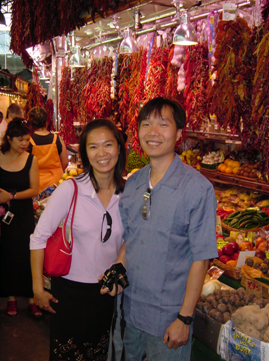
Two weeks after arriving here and decompressing on fine food and fine wine Ariel and I flew to Ireland. We met my parents there and together had a wonderful trip driving around the country for two weeks. This was a trip down memory lane for them as my mother grew up in Dublin and my father worked there for five years. They had me and decided to immigrate to the US.
Back to Spain. Not long after the Ireland trip, Ariel’s brother Cheang, flew in from New York to see us. He spent 10 days with us and we did all the tourist stuff here in Barcelona. This was Cheang’s first time to Spain, his first trip ever to Europe. We took a tourist bus, one of those double-decker jobs with the roof cut off and saw the city from 20 feet up. That was actually quite interesting and we were able to get a good overview of the big smoke.
It is a sprawling place with tons of museums and architectural wonders to see. We definitely won’t be getting bored here. Our plan is to spend the winter on the boat and use Barcelona as a base to explore part of Europe. Ireland was our first such trip off the boat. Next week we are off to France for a while. After a week roaming Paris we will rent a car to head south and see what France has to offer. That should be expensive but fun.
Why do I keep saying Europe is expensive? Because it is! In the last three years the US dollar, our beloved greenback, has devalued by 50% to the Euro – much like a Mexican peso. We are travelling on dollars and for us Europe is now 50% more expensive than it was such a short time ago.
For instance, in Ireland if you stay in a 3 star hotel, or even a 2 star job, out in a one cow town miles away from anything interesting expect to pay 100 Euros a night – or $125! Double or more that for Dublin. After two weeks doing a great circle route around the Emerald Isle we never found a hotel room for less than $125. Any meal in any small restaurant was at least $15 and that would be for a plate of spaghetti or soup and a sandwich. Oh, and gas is $5.50 a gallon!
Barcelona is not cheap either but it is much better value. We are paying $750 a month for our 55 foot slip right downtown which is cheaper than any hotel or apartment in the area. So we can’t really complain about that. Here you can also eat out for about half of what the same meal would cost in Ireland. I basically have taken the view that I just can’t look at the prices for anything anymore or I’d never get off the boat (and Ariel would kill me).
The weather now in mid-October is still warm enough to eat outside. Most restaurants have tables and chairs outdoors under umbrellas which are fun and good for people watching. The thing in Spain is to have paella and sangria at a sidewalk restaurant.
Paella is sort of like fried rice flavored with saffron and chunks of sea food. It is actually steamed in a giant pan that is brought out to the table and is the national dish. Sangria, as you will know, is just wine with fruit and fruit juice in it and they know how to make it here. All the wines are good and you can buy a bottle of decent wine for about $2 in the market! I only buy the really good stuff: $5! So the wine is cheaper than bottled water. Not a bad place to spend some time.
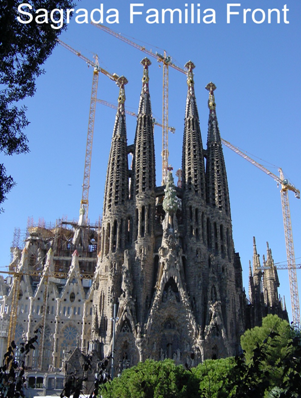
Barcelona’s most famous attraction is the Sagrada Familia cathedral. This isn’t like most cathedrals; tall, grey and boring but is a riotous jumble of styles and structures and still under construction. Barcelona’s second most famous son Gaudi (Picasso was the first) took over this project in 1888 and it is still going strong. They hope to finish it in another 20 years or so.
Yes, it appears the “manana” culture really did evolve lazily from here. We visited and went inside one of the towers. It was interesting in a Disneylandish type of way. It should be even more picturesque and “fanciful” (more like a cartoon than anything else, I thought) when complete.
Every Spanish town can claim at least one or two very large churches and as you might expect from such a Catholic country the Spanish take them very seriously. The BC (“big church”) is the first stop on a tourist itinerary to any village, town, city, etc., and is usually the focal point for most social activity as well.
We visited a BC in the town of Huesca which to my eyes looked like any other BC around but there was a Spanish man in there with a video camera taking a slow panorama of the altar so he could go home and show it to his eager neighbors back home I guess. However, to my pagan eyes, it looked pretty much like any other altar to be found in any other BC around the country.
Barcelona as a city is full of surprises. It seems every day there is some festival or other public activity. One morning we had low flying jet aircraft doing loops over the marina. The next it was a surprise air show on the beach with all different kinds of jets, airplanes and helicopters. They even had the guy from that Disney movie in an ultralight who goes flying with his pet geese in tow!
Taking a stroll through town you can easily round the corner to a small plaza and bump into a band or live stage act. It seems that they have activities popping up all around you everyday of the year. You definitely get the feeling the Spanish enjoy life and put a lot of emphasis on that. An example is the meal schedule which for Anglo Saxons takes some getting used to.
If you get up “early” say 8 o’clock in the morning, you will be the only one outside moving around except for some drunks from the night before but they don’t move too fast. By 9 o’clock, there is a little more activity but most businesses and restaurants don’t open until 10 AM. Breakfast, if you choose to have it, will be a coffee, cigarette and maybe a croissant. Lunch isn’t until 2 PM. Most restaurants don’t even open their doors until 1 PM (!).
All businesses pretty much CLOSE DOWN across the land for the THREE HOUR LUNCH. This is an old agricultural tradition where the farmers would have time to walk across the fields, over hill and dale, back to the village to have lunch with their families, followed by a snooze and then traipse back out to work the late afternoon.
Italics: (An interesting aside: flying over Spain you can see fascinating social topography as there are miles of deserted fields surrounding small towns perched on hilltops or mountains with people living in crowded conditions on top of and all around each other.
Unlike Northern Europeans and Americans, the Spanish are much like Asians and love living crammed in, cheek by jowl. They prefer the social network and social activities that come with town life and would much rather live that way and walk two hours to the fields there and back each day than live next to their work. Yes, it is much less efficient but like I said earlier, the focus here is on enjoying life).end italics.
Back to the meal plan. At lunch you are expected to drink a bottle of wine, sit outside, eat slowly your five course meal and generally take your time masticating and digesting. Then you traipse back to work around 4 or 5 PM and stay until 6:30 or 7 PM. This is true of students too.
More on the wine thing; I have even seen locals open a bottle of wine for breakfast. Alcohol here is looked upon as a drink like any other and doesn’t seem to carry the wicked, burn-in-hell-anti-Calvinist stigma it does in the US. And don’t even think about dinner until at least 9 PM and most places won’t fill up until 10.
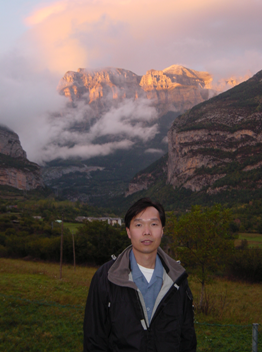
One of the best things we have done so far was renting a car and driving up into the mountain towns in the Pyrenees. We spent a couple of nights in a beautiful stone town built on a hillside. Torla, is tiny and right on the edge of a green valley that cuts right up into the tallest mountains of the region.
In the mornings all the peaks had a light dusting of snow (early October) and you could hear the cowbells from the fat cows wandering the soft rolling hills below. The town sits on the edge of a large national park and entry is free. We took a long day hike up into the mountains and were rewarded with tall trees, clear rivers, white waterfalls and stunning views. (And the hotel room was only 33 Euros a night).
The restaurant in the town we went to was so good (El Duende) that we went back the second night we were there as well. All in all, Spanish food is simple meat and potatoes but every ingredient is farm fresh. No sauces or seasonings are used, or if they are they are almost undetectable.
When you order a beef sandwich you get a plain slice of meat stuffed into a dry roll. That’s it, bubba. But the roll is freshly baked and the meat comes from a cow who just yesterday was happily romping in the meadows behind the restaurant with its friends.
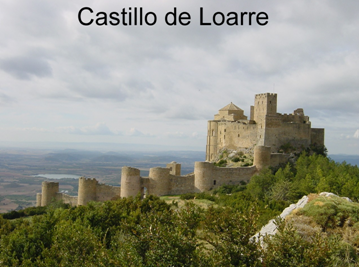
On our drive we spent a morning exploring the Castillo de Loarre which you can see in the photo. The castle was built 1,000 years ago and has a stunning setting with commanding views all over the plains below. It took a long time to explore all the passages and rooms and was well worth it.
This place was a Catholic stronghold when the Muslims ruled most of Spain. The lords used to ride down into the towns on the plains and raid Muslim towns making life difficult for the “moors,” as they were called, before high-tailing it back up into the safety of the castle. That was the entertainment back then.
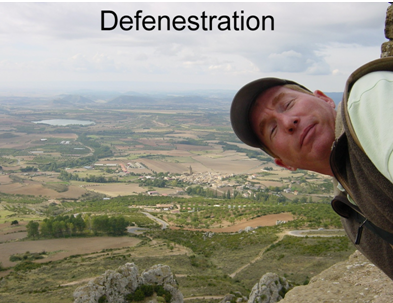
Other news, we have put Tehani up for sale. We have been aboard almost three years now and should start getting back to the US. We are quite happy to spend the winter on board in Barcelona and if we don’t sell the boat here then next year we will trundle along our merry way by sea back home. We’ll just have to wait and see what happens.
Postscript: We did sell Tehani-li eventually to an older couple from Australia who hope to spend time sailing in the Med before sailing back to Australia. Ariel and I returned to the US to try land-based life for a while. In California, we were blessed with the birth of our first child, Asmara, on May 15th, 2006.
The adventure continues.

